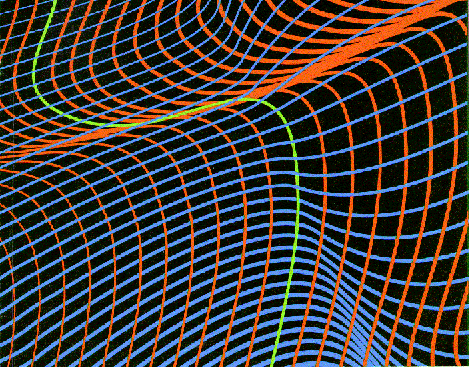|
 Jane C. Blake,
Jane C. Blake,
Managing Editor
The integration of personal computers in a network environment is the
subject of this issue of the Digital Technical Journal. The software
products that bring about this integration are known collectively as
PATHWORKS and are derived from Digital's Personal Computing Systems
Architecture. The engineering challenge for developers was to integrate
a variety of client (PC) and server systems-DOS, Windows, OS/2, Macintosh,
VMS, and ULTRIX-and to ensure that the intricacies of the meshing of these
systems remained transparent to PC users.
In the opening paper, Alan Abrahams and David Low provide background for
the papers that follow by describing the technical aspects of the various
hardware and software platforms, physical networks, and protocols that had
to be addressed by PATHWORKS developers. They also present an overview of
the PATHWORKS components which allow PC users to access network resources,
including files, printers, databases, and mail systems.
Among the capabilities PATHWORKS enables, PC access to files on server
systems is one of the most important for users. Two file servers, one for
VMS and another for ULTRIX, were developed for this purpose. A paper on
the development of the first of these, written by Ed Bresnahan and Siu
Yin Cheng, contains an architectural overview of the VMS file server. The
authors also detail the mapping done to bridge the differences between
DOS, OS/2, and VMS operating systems, including the interesting problem
of mapping DOS files organized as byte streams and VMS files organized
as collections of records. In a related paper, Phil Wells describes
performance improvements made in version 4.0 of the file server which
were achieved by optimizing the transport interface and the data buffering
algorithm. He discusses the analysis of server performance for various
interface models, the implementation of the algorithm in the VMS server,
and benchmark test results.
Like the VMS file server, the PATHWORKS software for ULTRIX systems
integrates PC clients with a server system on a LAN. However, as Anthony
Rizzolo, Beth Brewer, and Martha Chandler explain in their paper, a
multiple process model was chosen rather than the single process used in
the VMS file server. The authors give their reasons for this different
approach as part of a general discussion of the server design and
implementation.
The network is key to the exchange of data in the PATHWORKS environment,
and as is the case for the server software, multivendor systems must be
addressed to ensure smooth integration. Mitch Lichtenberg and Jeff Curless
describe how Digital has extended Microsoft's LAN Manager across a LAN
or a WAN by using the DECnet transport protocol as the transport layer
in PATHWORKS products. In addition to presenting the reasoning behind
the design of the transport component for DOS and OS/2 products, they
review steps taken to reduce memory usage, improve performance, and reduce
maintenance costs.
Further details on the integration of DECnet and LAN environments are
provided in the paper on two network virtual device drivers for the
Microsoft Windows environment. As Andy Nourse explains, these drivers
manage DECnet and NetBIOS operations and enable the Windows operating
system to support peripheral devices, memory resources, and software
applications. Andy first gives readers background on the Windows operating
modes, emphasizing the enhanced mode in which the drivers are available. He
then describes the development and capabilities of the two virtual device
drivers.
A significant new application in the PATHWORKS family, called eXcursion,
brings together the capabilities of X Windows, DECnet, and the Microsoft
environment, resulting in the display of both Windows and X Windows on
the same screen. Dennis Giokas and Andy Leskowitz present the integration
philosophy behind the display server and the implementation of the server
architecture. They also relate how designers approached the mapping of
the windows, graphics context, fonts, and color maps in the X and Windows
environments.
The issue concludes with a paper by Chris Methot on capacity modeling of
PATHWORKS client-server workloads. Chris describes a queuing analytical
model used to understand resource consumption on the server and the special
modeling process required in the client-server environment. The paper works
through a specific example of the model's identification of bottlenecks in
the system.
The editors thank Star Dargin and Carnel Hoover of the Personal Computing
Systems Group for their help in preparing this issue.
|
|